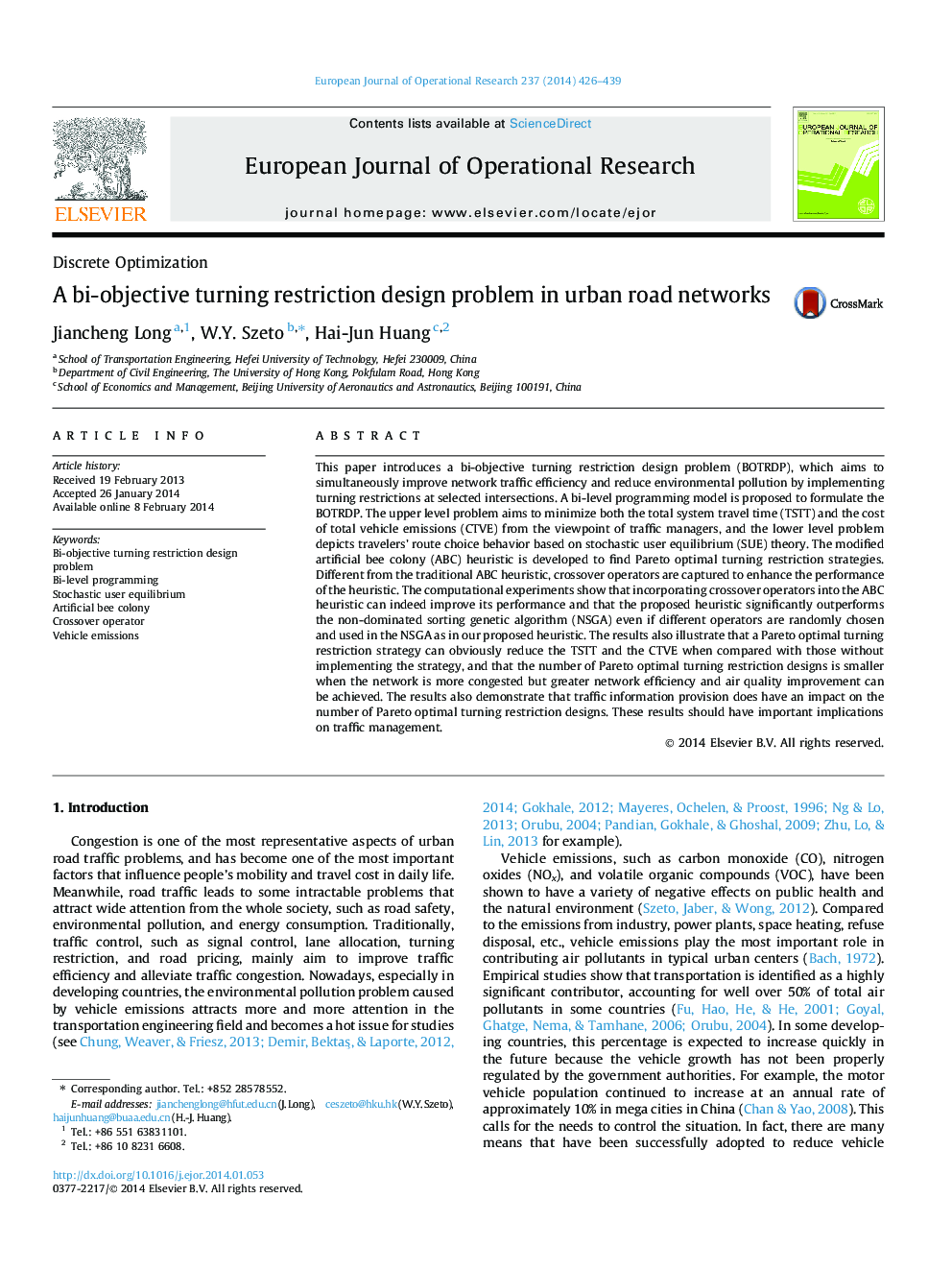| کد مقاله | کد نشریه | سال انتشار | مقاله انگلیسی | نسخه تمام متن |
|---|---|---|---|---|
| 478130 | 1446025 | 2014 | 14 صفحه PDF | دانلود رایگان |
• This paper introduces a bi-objective turning restriction design problem.
• Vehicle emissions and total travel time are considered in the upper level problem.
• Modified artificial bee colony (ABC) is developed to obtain Pareto optimal solutions.
• Incorporating crossover operators into ABC can improve its performance.
• Traffic information provision does have an impact on the number of optimal designs.
This paper introduces a bi-objective turning restriction design problem (BOTRDP), which aims to simultaneously improve network traffic efficiency and reduce environmental pollution by implementing turning restrictions at selected intersections. A bi-level programming model is proposed to formulate the BOTRDP. The upper level problem aims to minimize both the total system travel time (TSTT) and the cost of total vehicle emissions (CTVE) from the viewpoint of traffic managers, and the lower level problem depicts travelers’ route choice behavior based on stochastic user equilibrium (SUE) theory. The modified artificial bee colony (ABC) heuristic is developed to find Pareto optimal turning restriction strategies. Different from the traditional ABC heuristic, crossover operators are captured to enhance the performance of the heuristic. The computational experiments show that incorporating crossover operators into the ABC heuristic can indeed improve its performance and that the proposed heuristic significantly outperforms the non-dominated sorting genetic algorithm (NSGA) even if different operators are randomly chosen and used in the NSGA as in our proposed heuristic. The results also illustrate that a Pareto optimal turning restriction strategy can obviously reduce the TSTT and the CTVE when compared with those without implementing the strategy, and that the number of Pareto optimal turning restriction designs is smaller when the network is more congested but greater network efficiency and air quality improvement can be achieved. The results also demonstrate that traffic information provision does have an impact on the number of Pareto optimal turning restriction designs. These results should have important implications on traffic management.
Journal: European Journal of Operational Research - Volume 237, Issue 2, 1 September 2014, Pages 426–439
